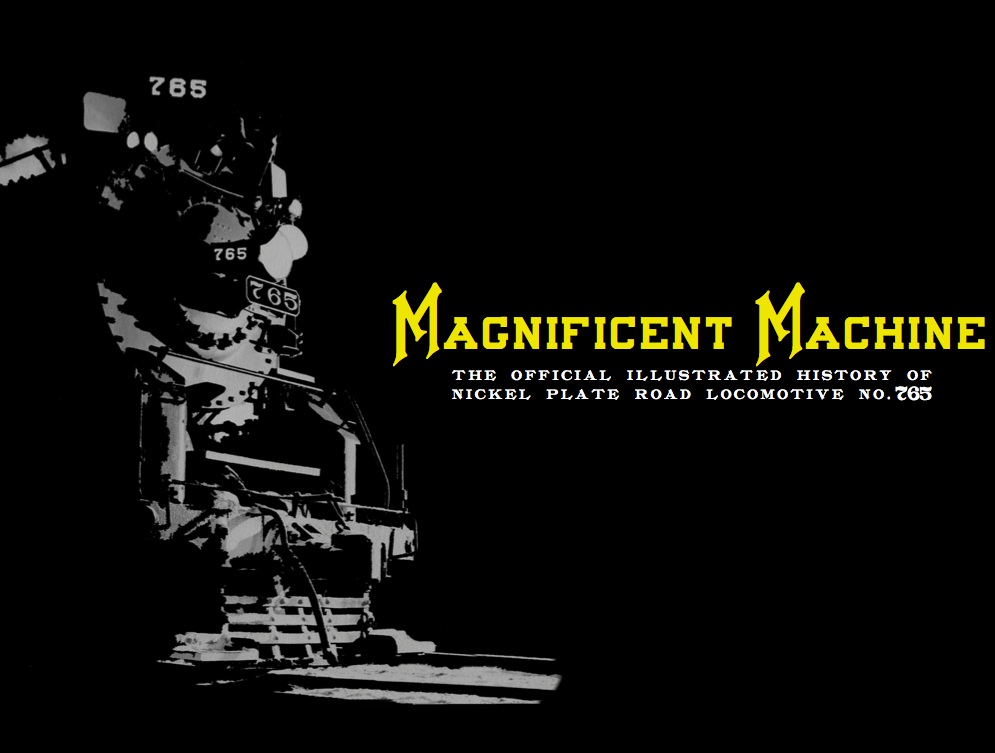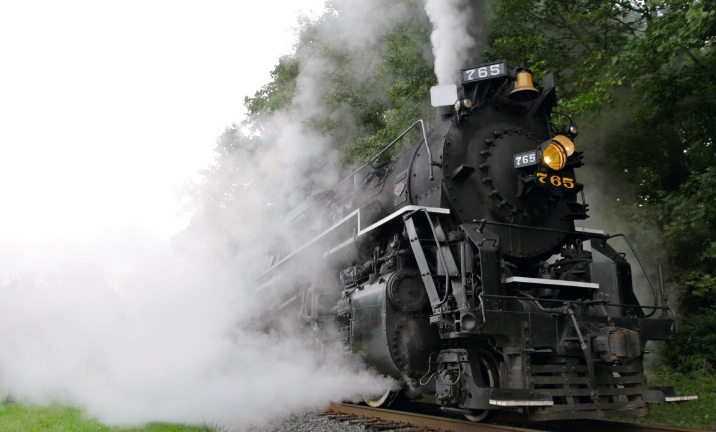Originally printed in the Winter 2012 issue of our newsletter, Short Lines. Become a member here to receive these and other stories.
By Kelly Lynch, Communications Director
As the 765 moved by night, by day, at reduced speed due to heat or at track speed on the highball, it stopped every town in its tracks. The slower summer speeds were hell on engine crew, but a blessing for the people who were given the extra moment to ponder the unusual sound in the distance, stare through their kitchen windows, leave their front doors, and exit offices and storefronts to take in the sight of our machine.
No amount of strategically planned press releases or news reports could have bought us the constant, magnetized presence of the thousands of people who accompanied us out west and on the return home. It’s a good thing it was summer, because school attendance would have been curiously low for those whistle stop cities we passed through.
I lost count of the streets called “Railroad†as we passed through the dozens of line-side towns, where there were no two smiles alike in the crowds armed with cell phones and cameras and brandishing their pearly whites and waves. We were to blame for productivity losses all over the midwest, especially within those factories and small businesses whose back doors would find themselves open as employees wandered out to enjoy the show.
On every trip I find myself envying those people who are perhaps seeing the 765 for the first time. What’s that like, I wonder, to know nothing of this Tyrannosaurs Rex that’s now marching down Main Street and to be so in awe of the thing you’re damn near scared of it. What’s it like, anyway? And I always find myself wishing people could get a longer look or that we had an infinite number of leaflets to drop, so they could know everything there was to know about why we were there.
One woman, describing her adventure in finding us on the trip home wrote, “It’s like tracking down Santa Claus.†Another person wrote, “I bet you guys were the most photographed thing in the country.â€

At a brief stop for the Canadian Pacific in Gilman, we had pizza delivered to the train. Before departure in Peoria, a friend of ours at RailAmerica bought us enough breakfast burritos to last us until Kansas City.
At servicing stops, hard grease and oiling were completed like it was an art. By the end of the whole ordeal using the alemite gun, normally a handful in the heat and grease, was like unholstering a feather pen.
The total crew on the train numbered six, with one trick resting, one operating, and one taking in the show. The passenger train, outfitted by its incredible owners MidAmerica Railcar Leasing, had everything from air conditioning to showers, and on the trip home, even a bunk car.
More than once on that trip you could enjoy a shower, a shave, and a meal behind a Nickel Plate Road steam engine. A fellow crew member joining us for the return trip back couldn’t believe he was falling asleep to a steam locomotive a few cars ahead of him. Neither could I.
Profound memories of the “I can die happy now†kind happened out of nowhere, like waving to my dad, the man who got me into this mess to begin with, from the fireman’s seat as we roared by him or the long night run that began with my girlfriend executing a one-in-a-million toss of a Coca-Cola can into my hand as I reached out of the cab at speed in a completely unplanned marriage of love and choreography.
I didn’t think they made memories like these anymore.
There is little need to mention the long days, extreme temperatures, missed income, sore limbs, sunburn, erratic sleep schedules, or questionable hotel lodging while on the road. Sometimes that whistle does grate and the concern about lifting safeties or maintaining water can get your skin leaking, but this is the memory machine and complaints don’t very well amount to much in comparison.
Aboard the tool car on the 765’s day long, lightning fast trip to Bureau, Illinois and back in July, there wasn’t room to stand in the vestibules, but we crowded them anyway.
The constant, shotgun conversation from the locomotive running the fastest it had since 1993 was throwing people into trances. Instead of saying “I think I can,†it was proclaiming “Of course I can.†Something funny happens to our volunteers when they exchange looks on these trips; they all know exactly what the other is thinking without saying a word.
Every one of our volunteers, with their ears and eyes glued to the countryside, was responsible for the sight and sound up ahead, the very same fury that transfixed us all.
With every throttle notch and stoker adjustment, it was like we were all seeing her again for the first time.




